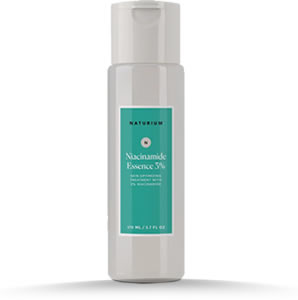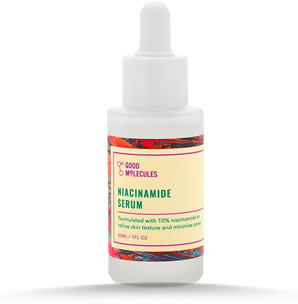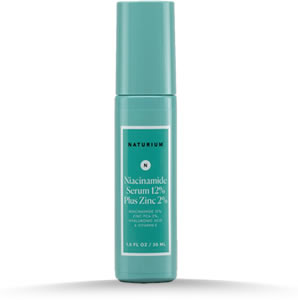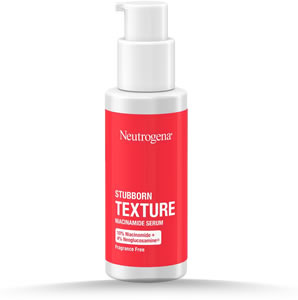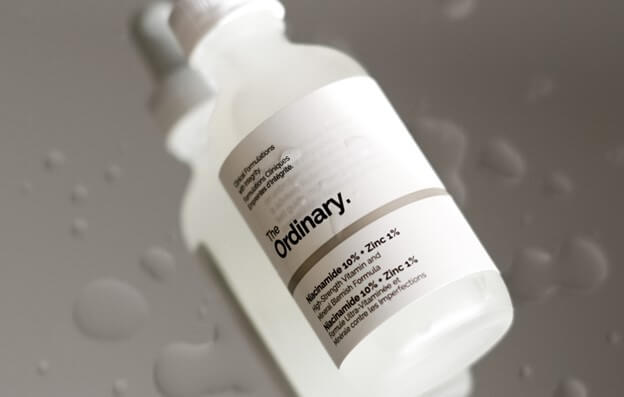
Skincare concerns are common among individuals of all ages, ranging from acne to more specific conditions like fungal acne.
Fungal acne, or pityrosporum folliculitis, is caused by an overgrowth of yeast on the skin.
While bacteria typically cause traditional acne, fungal acne is triggered by the fungus Malassezia. In recent years, the use of niacinamide in skin care has gained popularity, with claims that it can help alleviate fungal acne.
Does niacinamide help with fungal acne? Yes, niacinamide can be effective in managing fungal acne.
It helps regulate sebum production, reduces inflammation, and has antimicrobial properties. However, consulting with a dermatologist for the proper diagnosis and treatment of fungal acne is essential.
In this article, we will explore the potential benefits of niacinamide in managing fungal acne breakouts.
Understanding Fungal Acne
Fungal acne is characterized by small, itchy, acne-like bumps that typically appear on the chest, back, and face. Unlike traditional acne, these bumps are caused by an overgrowth of yeast rather than bacteria.
The fungus Malassezia, which naturally resides on the skin, can multiply and cause an infection when conditions like excess sebum production, humid environments, or an impaired skin barrier function are present. Fungal acne requires a different treatment approach than bacterial acne, as the underlying cause differs.
We have also written an article on the best moisturizers for fungal acne. These best-in-class moisturizers can really help strengthen the protective skin barrier and enhance skin tone.
The Role of Niacinamide in Skincare
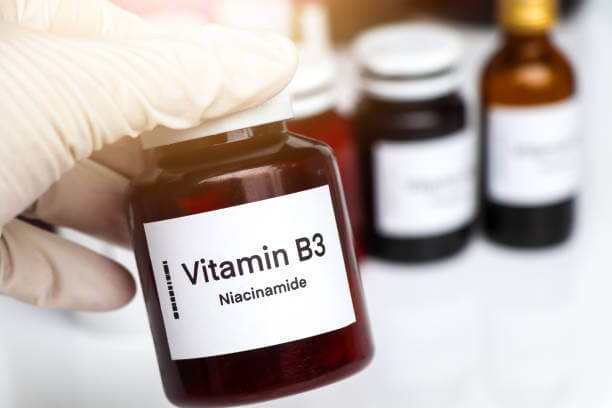
Niacinamide, or vitamin B3, is a popular ingredient in skincare products. It has been widely studied and is known for its numerous benefits to the skin.
Niacinamide has shown promise in improving oily skin texture, reducing hyperpigmentation, and minimizing the appearance of fine lines and wrinkles.
It also exhibits anti-inflammatory properties and can regulate sebum production, making it a potentially helpful ingredient for managing fungal acne breakouts.
1. Antifungal Properties of Niacinamide
While niacinamide is primarily known for its cosmetic benefits, research has shown that it may also possess antifungal properties.
A study in the Frontiers in Microbiology journal found that niacinamide has significant inhibitory effects against Candida Albicans, a yeast similar to the one responsible for fungal acne, Malassezia. [1]
In another study published by the Journal of Dermatological Treatment (Naples, Italy), Niacinamide once again demonstrated its yeast-inhibitory effects on seborrheic dermatitis (SD), another skin condition linked to Malassezia yeasts. [1.1]
These findings suggest that niacinamide may help control the overgrowth of yeast on sensitive skin, a crucial step in managing fungal acne.
2. Sebum Regulation and Fungal Acne
Excess sebum production can contribute to the development of fungal acne by creating an environment that encourages the growth of Malassezia.
However, unlike salicylic acid and benzoyl peroxide, niacinamide has been shown to regulate sebum production and reduce oiliness without irritating sensitive skin types. [2 , 3 , 4]
By controlling sebum levels, niacinamide can help prevent the conditions that favor the growth of the fungus, thereby reducing the risk of fungal acne.
3. Strengthening the Skin Barrier
Maintaining a healthy skin barrier is essential in preventing and managing fungal acne. A compromised skin barrier can allow fungi and other pathogens to penetrate sensitive skin more quickly, leading to infections like fungal acne. [5 , 6 ]
Niacinamide has been found to enhance the skin barrier function by increasing the production of ceramides, essential components of the skin’s protective barrier.[7]
By strengthening the skin’s barrier, niacinamide may help prevent Malassezia’s overgrowth and reduce fungal acne. Moreover, it also improves hair follicles and hair growth. [8]
4. Anti-Inflammatory Effects
Inflammation is a common characteristic of fungal acne, causing redness, itching, and discomfort.
Niacinamide has remarkable anti-inflammatory properties that can help soothe the skin and alleviate the symptoms associated with fungal acne.[9 , 10 ]
It reduces the production of inflammatory substances in the skin and has been shown to improve the overall appearance of inflamed and irritated or oily skin. [11]
Also, read our previous article to learn more about fungal acne.
Niacinamide for Fungal Acne: Our Top Product Picks
The following niacinamide-based products are free from ingredients that can trigger fungal acne. They can also help balance, soften, and prep skin for further skincare.
Naturium Niacinamide Essence 3%
If you’re new to niacinamide and have sensitive, fungal acne-prone skin, Naturium Niacinamide Essence 3% is an excellent choice for you.
With a lower concentration of niacinamide compared to other products, it is perfect for those with sensitive skin while still being suitable for all skin types.
STAR INGREDIENTS:
- 3% Niacinamide
- Sodium Hyaluronate/Hyaluronic Acid (hydrates and plumps the skin)
- Beta-Glucan (skin repairing, soothing, and moisturizing)
MORE INFO: NATURIUM’S NIACINAMIDE ESSENCE 3%:
- Fungal Acne Safe
- Dermatologist Tested
- pH 5.0-6.0
- Vegan
- Cruelty-Free
- Fragrance-Free
- Paraben-Free
- Gluten-Free
Good Molecules Niacinamide Serum
The Good Molecules Niacinamide Serum, containing 10% Niacinamide, is an outstanding option for refining skin texture and minimizing the appearance of pores, particularly for individuals with normal and combination skin types that are prone to fungal acne.
It blends effortlessly with skincare and makeup while simultaneously protecting against moisture loss and the weakening of the skin barrier.
STAR INGREDIENTS:
- 10% Niacinamide
- Glycerin(moisturizing and soothing)
- Betaine (balances, moisturizes, and protects the skin)
MORE INFO: GOOD MOLECULES’ NIACINAMIDE SERUM:
- Fungal Acne Safe
- Fragrance-Free
- pH 7.1
- Vegan
- Cruelty-Free
Naturium Niacinamide Face Serum
Naturium’s Niacinamide Serum with 12% Niacinamide Plus 2% Zinc is an excellent option for those with dry or aging skin who want to smooth the appearance of fine lines and wrinkles and achieve a more even-looking complexion.
The formula is expertly crafted with optimal potency in mind, clinically proven, and pH-appropriate to guarantee maximum effectiveness and support for skin health.
STAR INGREDIENTS:
- 10% Niacinamide
- 2% Zinc PCA (targets acne bacteria and hydrates skin)
MORE INFO: NATURIUM’S NIACINAMIDE SERUM 12% PLUS ZINC 2%:
- Fungal Acne Safe
- Dermatologist Tested
- pH 5.00 – 5.60
- Fragrance-Free
- Vegan
- Cruelty-Free
- Gluten-Free
- Paraben Free
Neutrogena Stubborn Texture Niacinamide Serum
If you’re having trouble with stubborn skin texture and dark spots, especially if you have oily and acne-prone skin, Neutrogena’s Stubborn Texture Niacinamide Serum with 10% Niacinamide is the perfect solution for you.
This serum is not only gentle enough for sensitive skin, but it also helps to improve the overall look and feel of your skin, giving you a healthy-looking complexion in just two weeks.
STAR INGREDIENTS:
- 10% Niacinamide
- 4% Neoglucosamine (eliminates dark spots and brightens the skin)
MORE INFO: NEUTROGENA’S STUBBORN TEXTURE NIACINAMIDE SERUM:
- Dermatologist Tested
- AM or PM Use
- Paraben Free
- Fragrance-Free
- Dye-Free
- Phthalates-Free
Also, don’t forget to explore our latest article on the top-rated fungal acne safe products from “The Ordinary”, which includes their best-selling Niacinamide 10% + Zinc 1% serum as well as other highly recommended items.
Managing Fungal Acne: A Multifaceted Approach
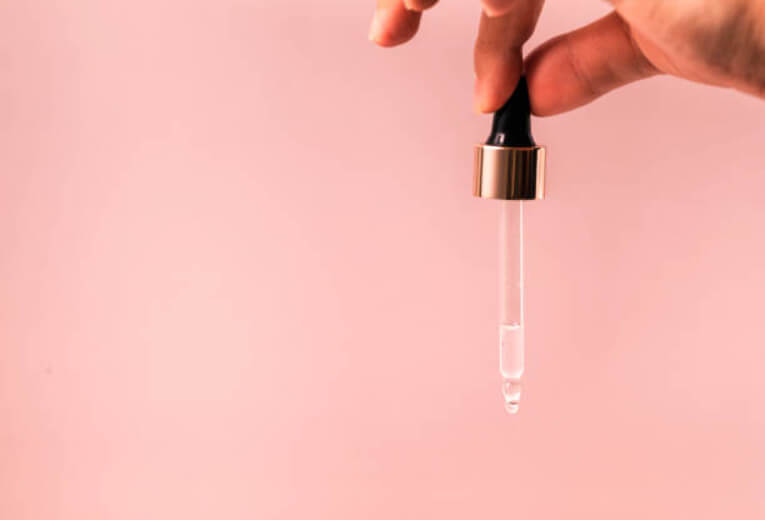
While niacinamide may offer benefits in treating fungal acne, it is essential to note that a multifaceted approach is typically required for effective treatment. In addition to incorporating niacinamide into your skincare routine, several other measures can aid in managing fungal acne.
#1 Consultation with a Dermatologist or Skincare Professional
If you suspect that you have fungal acne, it is advisable to seek professional advice from a dermatologist or skincare professional. They can accurately diagnose the condition and guide you on the most appropriate treatment plan.
They may recommend antifungal medications, topical treatments, or other interventions in addition to the use of niacinamide.
#2 Incorporating Niacinamide into Skincare Routine
If your dermatologist or skincare professional determines that niacinamide may benefit your fungal acne, they may recommend incorporating it into your skincare routine.
Niacinamide can be found in various skincare products such as cleansers, toners, serums, fungal acne safe sunscreens, and fungal acne safe moisturizers. It may also be present in certain benzoyl peroxide, mandelic, or salicylic acid-based preparations.
In addition to niacinamide, following the instructions provided by the manufacturer or your healthcare professional when using these products is essential.
#3 Additional Measures for Effective Treatment
In addition to niacinamide, several other measures can support the management of fungal acne.
These include keeping the affected areas clean and dry, avoiding oily or comedogenic skincare products, wearing breathable clothing, practicing good hygiene, and using fungal acne-safe products.
It is also important to avoid picking or popping the bumps, as this can exacerbate the condition and potentially lead to scarring.
Learn how to combat fungal acne on your back with our informative article.
Potential Side Effects and Precautions
While niacinamide is generally considered safe for most individuals, it is essential to be aware of potential side effects and take necessary precautions. Some people may experience mild irritation or redness when using niacinamide-containing products.
If you have sensitive or irritated skin or a history of allergies, performing a patch test before applying niacinamide to your face or body is recommended.
If any adverse reactions occur, discontinue use and consult with a healthcare professional.
However, the biggest myth about using niacinamide is it causes skin cancer, an entirely false statement roaming the internet.
Conclusion
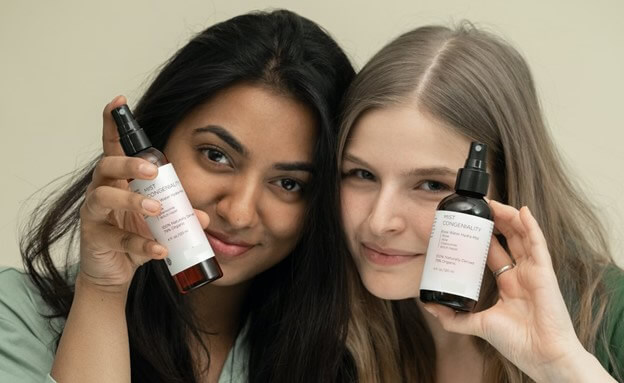
Fungal acne can be a frustrating and challenging condition to manage. While niacinamide shows promise in helping to alleviate fungal acne, it is essential to approach treatment in a multifaceted manner.
Incorporating niacinamide into your fungal acne skincare routine, consulting a dermatologist or skincare professional, practicing good hygiene, and taking additional measures, can contribute to the effective management of fungal acne.
Everyone’s skin is unique, so finding the best approach for your specific skin care needs is essential.
FAQs – Frequently Asked Questions
1. How Long Does It Take to See Results When Using Niacinamide For Fungal Acne?
The timeframe for seeing results may vary depending on individual factors, such as the severity of the fungal acne and the specific treatment regimen.
It may take several weeks to notice improvement when incorporating niacinamide into your skincare routine. Consistency is critical, so following the recommended usage guidelines and being patient with the process is essential.
2. Can I Use Niacinamide Alongside Other Skincare Products For Fungal Acne?
Niacinamide can typically be used alongside other skincare products for fungal acne, but it is crucial to consider compatibility and avoid any ingredients that may worsen the condition.
Consult with a dermatologist or skincare professional to ensure that your products are suitable and do not interfere with the effectiveness of niacinamide or other prescribed treatments.
3. Are There Any Dietary Changes That Can Help With Fungal Acne?
While topical treatments and skincare measures are crucial for managing fungal acne, dietary changes may also support overall skin health.
Some individuals have reported improved skin conditions by reducing their sugary and processed foods intake and incorporating foods that support optimal gut health, such as probiotics and fermented foods.
However, it is essential to note that dietary changes alone may not be sufficient to treat fungal acne and should be combined with other appropriate treatments.
Learn more about fungal treatment in our previous article.
- Xing X, Liao Z, Tan F, Zhu Z, Jiang Y, Cao Y. Effect of Nicotinamide Against Candida albicans. Front Microbiol. 2019 Mar 26;10:595. doi: 10.3389/fmicb.2019.00595. PMID: 30972047; PMCID: PMC6443637.
- Topical Nicotinamide for Seborrheic Dermatitis: An Open Randomized Study,” 2014.
- Endly DC, Miller RA. Oily Skin: A Review of Treatment Options. J Clin Aesthet Dermatol. 2017 Aug;10(8):49-55. Epub 2017 Aug 1. PMID: 28979664; PMCID: PMC5605215.
- Draelos ZD, Matsubara A, Smiles K. The effect of 2% niacinamide on facial sebum production. J Cosmet Laser Ther. 2006 Jun;8(2):96-101. doi: 10.1080/14764170600717704. PMID: 16766489.
- Cassiano DP, Espósito ACC, da Silva CN, Lima PB, Dias JAF, Hassun K, Miot LDB, Miot HA, Bagatin E. Update on Melasma-Part II: Treatment. Dermatol Ther (Heidelb). 2022 Sep;12(9):1989-2012. doi: 10.1007/s13555-022-00780-4. Epub 2022 Jul 29. PMID: 35906506; PMCID: PMC9464276.
- Lee HJ, Kim M. Skin Barrier Function and the Microbiome. Int J Mol Sci. 2022 Oct 28;23(21):13071. doi: 10.3390/ijms232113071. PMID: 36361857; PMCID: PMC9654002.
- Saunders CW, Scheynius A, Heitman J. Malassezia fungi are specialized to live on skin and associated with dandruff, eczema, and other skin diseases. PLoS Pathog. 2012;8(6):e1002701. doi: 10.1371/journal.ppat.1002701. Epub 2012 Jun 21. PMID: 22737067; PMCID: PMC3380954.
- Tanno O, Ota Y, Kitamura N, Katsube T, Inoue S. Nicotinamide increases biosynthesis of ceramides as well as other stratum corneum lipids to improve the epidermal permeability barrier. Br J Dermatol. 2000 Sep;143(3):524-31. doi: 10.1111/j.1365-2133.2000.03705.x. PMID: 10971324.
- Choi YH, Shin JY, Kim J, Kang NG, Lee S. Niacinamide Down-Regulates the Expression of DKK-1 and Protects Cells from Oxidative Stress in Cultured Human Dermal Papilla Cells. Clin Cosmet Investig Dermatol. 2021 Oct 18;14:1519-1528. doi: 10.2147/CCID.S334145. PMID: 34703266; PMCID: PMC8536842.
- Gehring W. Nicotinic acid/niacinamide and the skin. J Cosmet Dermatol. 2004 Apr;3(2):88-93. doi: 10.1111/j.1473-2130.2004.00115.x. PMID: 17147561.
- Boo YC. Mechanistic Basis and Clinical Evidence for the Applications of Nicotinamide (Niacinamide) to Control Skin Aging and Pigmentation. Antioxidants (Basel). 2021 Aug 21;10(8):1315. doi: 10.3390/antiox10081315. PMID: 34439563; PMCID: PMC8389214.
- Ashkani Esfahani S, Khoshneviszadeh M, Namazi MR, Noorafshan A, Geramizadeh B, Nadimi E, Razavipour ST. Topical Nicotinamide Improves Tissue Regeneration in Excisional Full-Thickness Skin Wounds: A Stereological and Pathological Study. Trauma Mon. 2015 Nov;20(4):e18193. doi: 10.5812/traumamon.18193. Epub 2015 Nov 23. PMID: 26839851; PMCID: PMC4727459.
More Content
- Anti-fungal Creams for Face
- Fungal Acne Safe Products You Can Add To Your Skin Routine
- The Best Face Wash For Hormonal Acne
- Fungal Acne-Safe Toners Your Skin Will Love
- The Best Fungal Acne Safe Foundation For Your Skin
- Fungal Acne-Safe Makeup Products to Achieve Smoother Skin
- Malezia Skincare: A Game-changer for Fungal Acne
- Sebaceous Hyperplasia treatment at home
- The Best Moisturizers for Fungal Acne
- Fungal Acne Cleansers – An Updated List
- The Ultimate Skin Care Routine for Fungal Acne
- Best Fungal Acne Products

